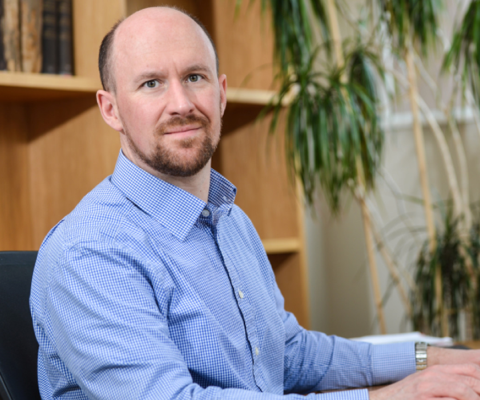


Over the years I have had several opportunities to visit China for scientific purposes. My first visit was to Beijing and Shanghai in 2010 and since then I have attended many conferences and given invited seminars in various locations. My first visit to the Changchun Institute of Optics, Fine Mechanics and Physics (CIOMP) of the Chinese Academy of Sciences (CAS) was in 2018 when I was invited to co-chair the Light Conference. This was a great privilege and an excellent opportunity to help highlight the wide range of high-quality research that is taking place in the fields of optics and photonics. Furthermore, the conference was an important networking opportunity, not only to connect with researchers in CAS, Changchun and the rest of China, but also with international visitors. The programme also included tours of the institute and associated organizations such as Hooke Instruments. I was very pleased to learn more about the successful activities taking place there — in particular the advances made by my former colleague from Oxford, Professor Li Bei. I further attended the subsequent Light Conference in 2019, which was a similarly interesting occasion, at which I was also accompanied by two PhD students from my research group. This time, I was also able to serve on the committee to choose the young researchers who would win the “Rising stars of light” competition, which showcased an impressive range of activities from across the world.
These visits were important in cementing an ongoing research collaboration between my group in Oxford and the research of Professor Li in CAS/Changchun. Our original work together had begun in Oxford and this provided the seeds from which our future cooperation would grow. This joint work centers on novel technologies built around high-resolution optical microscopes. My own research covers many aspects of microscopy and laser machining, with a particular emphasis on enabling new applications of adaptive optics. In these techniques, we use deformable mirrors or liquid crystal devices to control the phase of light to shape laser foci or to correct for aberrations. This has led to many advances in high or super-resolution imaging for biomedical applications. Our joint work with Professor Li took a different direction. In this case, we applied adaptive optics to a novel form of cell selection technology based upon laser induced forward transfer (LIFT).
An adaptive optical element, in the form of a liquid crystal spatial light modulator, was used to shape the intensity of the light field. The laser pattern was used to selectively illuminate a region of a specimen where biological cells of interest were located. The cells were located on a specially deposited layer that could be ablated by the laser. The beam shape was controlled through the use of an appropriate holographic pattern displayed on the spatial light modulator. This required modulator pattern was calculated from an image of the cells to ensure that only the cells of interest were ejected and collected by the system. This project drew jointly upon the expertise of research developed in Oxford and that from Changchun. This was an excellent example of how experience from different institutions can cross over to create new ideas and further research goals.
I am looking forward to future cooperation with CAS, such as in the application of adaptive optics aberration correction to microscopic imaging systems. There is significant scope to improve microscopes’ imaging abilities in tissue specimens by compensating the optical wavefront distortions that are commonly encountered. There is also the possibility of including polarization sensitive methods for label free cell identification, which could lead to further applications where the LIFT method could be applied.
Source: Martin Booth,
Changchun Institute of Optics, Fine Mechanics and Physics,
Chinese Academy of Sciences